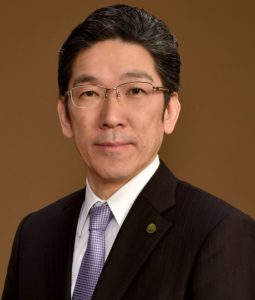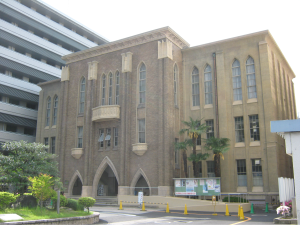Professor Shigeru Hirano, Department of Otolaryngology–Head and Neck Surgery, Kyoto Prefectural University of Medicine

Voice symbolizes individuality and enriches life. Yet, this delicate organ can be easily compromised by daily use, aging, or illness.
We spoke with Professor Shigeru Hirano, an ENT specialist at Kyoto Prefectural University of Medicine, who has dedicated his career to treating vocal disorders and advancing regenerative medicine. His lifelong passion for voice — from singing in a rock band to studying its mechanisms medically, and even embracing opera in his 50s — vividly illustrates a life lived in harmony with the voice.
While recognized globally as a pioneer in vocal fold regenerative therapy, Professor Hirano also remains grounded in clinical practice and is exploring antioxidant approaches as a promising adjunct to protect the voice.
Here is his story: how he chose this path, developed a novel treatment absent anywhere in the world, and continues to push forward in pursuit of new possibilities.
― What inspired your career in medicine?
Professor Hirano: I first considered becoming a doctor in high school. We grew up reading “Black Jack”, so I dreamed of healing people with my hands as a surgeon. My father was also a surgeon, which certainly influenced me. My origin was always wanting to help suffering patients with my own skill.
I chose ENT, especially focusing on the voice, largely because I sang lead in a high‑school rock band. I always had a fascination with voice.
Rock singing typically strains the vocal folds due to forceful throat compression. That’s why many rock vocalists become hoarse over time — their vocal folds suffer structural damage.
In contrast, classical singing like opera relies on abdominal breathing and whole‑body resonance, which is far gentler on the vocal folds. That’s how opera singers can maintain strong voices into old age.
These contrasts fascinated me. Paired with the opportunity to also treat head and neck cancers — my other specialty — I felt ENT was the ideal field.
After 50, I began studying opera myself around 10 years ago for two reasons:
Ultimately, voice longevity depends not just on the inherent strength of vocal tissues, but how we use them. Thoughtful use preserves, while misuse accelerates deterioration. This led me to explore optimal care for vocal folds — the cornerstone of my research.
― Tell us about your research in vocal fold regeneration.
Professor Hirano: I began formal research after ENT specialization and graduate school. But balancing clinical duties in Japan left limited time for focus.
That’s why I studied in the U.S. for two years, entirely immersed in research without clinical interruption. That experience was pivotal — it enabled everything that followed.
In the early 2000s, no treatment existed to regenerate deteriorated vocal folds. Many patients suffered voice loss or hoarseness, with no remedy. As a doctor, I was determined to change that.
Traditional treatments, like injecting hyaluronic acid, provided temporary bulk, but the effects quickly faded.
So I focused on regeneration — stimulating tissue from within. The key was growth factors, particularly fibroblast growth factor (FGF), originally used in skin regeneration. FGF stimulates hyaluronic acid production and enzymes that soften stiff collagen — making it ideal for vocal fold rejuvenation.
Driven by conviction, I worked on this treatment for over 15 years. After extensive basic and animal studies, by around 2014 it became applicable in patients.
It is especially effective for age‑related atrophy of vocal folds, improving voice in 80–90% of cases. So far, over 200 patients have received it, including singers whose voices returned and those who regained conversational speech — affirming the worth of this journey.
Challenges remain: severe scarring in vocal folds post‑radiation or long misuse (laryngeal scarification) resists current growth factor therapy. That’s my next major goal.
Another hurdle is insurance coverage. Since it remains self‑pay, access is limited. The therapy is unique globally; even growth factor itself is not approved overseas. Yet patients travel from abroad for it. We are now pursuing clinical trials toward insurance coverage so more people can benefit.
― How does antioxidant research relate to your work?
Professor Hirano: Alongside regenerative medicine, I became increasingly interested in “antioxidation”, inspired by anti‑aging conferences.
Vocal folds vibrate hundreds of times per second even in conversation, causing mechanical stress and inflammation. That inflammation generates reactive oxygen species, accelerating tissue aging.
My initial studies began with astaxanthin — known for antioxidant action. In animal models, rats given astaxanthin showed reduced oxidative buildup and faster wound healing in vocal tissues.
In 2016, after moving to Kyoto Prefectural University, I encountered Twendee X, developed by Dr. Haruhiko Inubo. This combination of multiple antioxidants exhibits far stronger effects than single agents. Since then, my antioxidant research has centered on Twendee X.
For vocal fold care, I advocate a three‑pillar strategy:
I particularly recommend daily antioxidant supplements for those who overuse their voice — singers, teachers, etc. Many report feeling better even after heavy use.
We also conducted a clinical study: patients undergoing vocal polyp surgery were given Twendee X pre‑ and post‑operatively. Recovery was significantly faster and voice outcomes were superior versus controls. The full results will be published soon.
ENT areas—ear, nose, throat—are constantly exposed to external stressors and prone to inflammation and oxidative damage. Antioxidant strategies hold great promise not just for voice, but also for hearing, taste/smell, and swallowing function. We aim to deepen this approach for preventive care and conditioning support.
― What principles guide your research?
Professor Hirano: Above all, I value research rooted in clinical practice and delivered back to patients. Our department is clinical, not pure basic science — we don’t do research for research’s sake.
True fundamental research can be a decades‑long treasure hunt—maybe yielding nothing, or Nobel‑worthy findings. But my model is different. I begin with questions from patient care: “Why doesn’t this condition heal? What could work better?” From there, I form hypotheses and plan experiments.
This goal‑oriented approach allows measurable progress, often within five years, and leads naturally to patient treatments. That is my ideal research philosophy.
I credit much of this to my U.S. experience, where guidance was minimal and I learned to think independently through discussions. That shaped my approach to guiding young researchers — encouraging clinical questioning and matching each person to their ideal path, whether clinical or research-focused. That’s my role as a mentor.
Today we traced Professor Hirano’s path from rock band vocals to ENT surgery, the world‑first vocal fold regeneration therapies, and the exploration of antioxidant strategies.
Combining rehabilitation and surgery with regenerative medicine and antioxidants may offer new hope for patients struggling with voice and swallowing disorders.
The field of voice-preserving medicine continues to expand. We hold high expectations for Professor Hirano’s future research and the novel treatments it may lead to.

Department of Otolaryngology–Head & Neck Surgery, Kyoto Prefectural University of Medicine
465 Kajii‑cho, Kawaramachi‑dori, Hirokoji‑agaru, Kamigyo‑ku, Kyoto 602‑8566
https://kpument.com